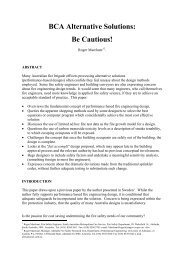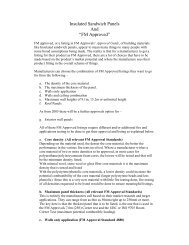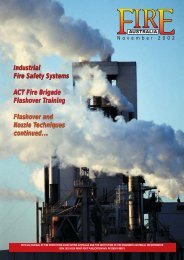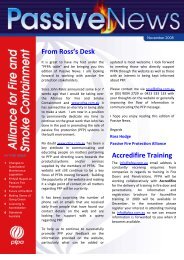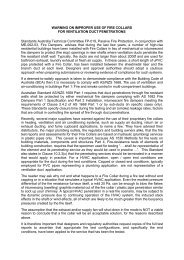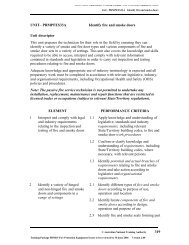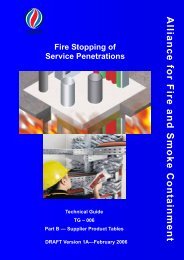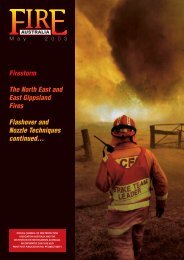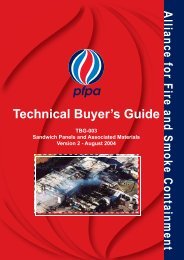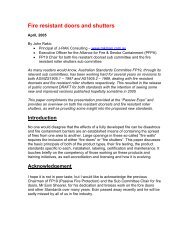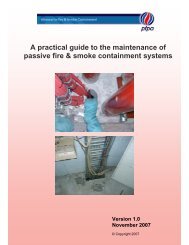Containment
TG - Fire Stopping - Part A.pub - PFPA
TG - Fire Stopping - Part A.pub - PFPA
- No tags were found...
Create successful ePaper yourself
Turn your PDF publications into a flip-book with our unique Google optimized e-Paper software.
28<br />
Labelling & Paperwork<br />
Where practical, all fire stopping system should<br />
be labelled for identification purposes to assist<br />
with ongoing maintenance (ongoing inspection<br />
and testing as appropriate). Although the<br />
requirements in AS4072 Part 1 are only<br />
contained in an informative Appendix, it is<br />
highly recommended that fire stopping systems<br />
are labelled.<br />
To assist with certification and to provide a<br />
suitable platform for subsequent maintenance<br />
and evidence of compliance schedule should<br />
be provided by the installation companies at<br />
the time fire stopping systems are employed<br />
into buildings. These would be accompanied or<br />
reference fire compartment drawings and each<br />
penetration or cluster of services should have<br />
a unique identification number.<br />
Good workmanship<br />
It might sound obvious but an important<br />
element of a fire stopping system is good<br />
workmanship. This can be translated into<br />
competent installers with adequate training,<br />
knowledge of the fire stopping product and fire<br />
stopping systems in question.<br />
In short, someone who takes pride in their<br />
workmanship and has the appropriate skills<br />
is required to install and / or maintain fire<br />
stopping systems<br />
In some States and Territories, competencies<br />
translate in formal accreditation and licensing<br />
requirements.<br />
The evidence of compliance certificate,<br />
provided to certify the works should be<br />
accompanies with the detailed schedules listed<br />
above.<br />
Appropriate labelling and paper work to support<br />
certification of fire stopping systems is an<br />
important part of an overall and acceptable<br />
installation<br />
Version 1a—March 2006



